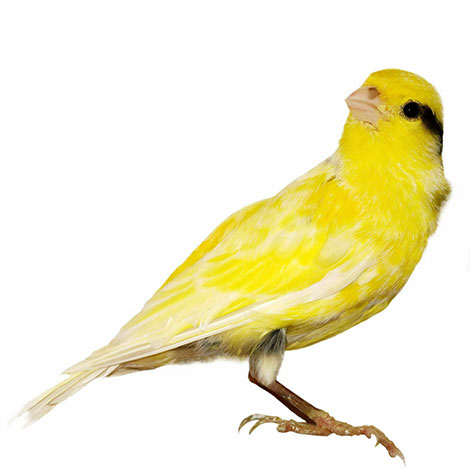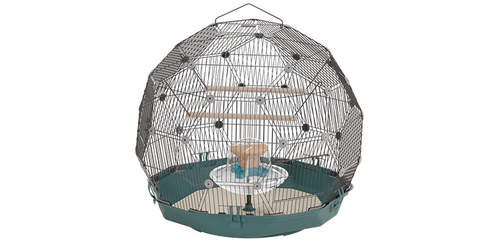Canary courtship, pairing and nesting generally follow a similar pattern to the stages outlined above, but with one or two notable differences. Most importantly, if your birds are indoors, the cock and hen should be kept in separate cages, in close proximity. If they are thrown together without ceremony, they will fight. Birds in aviaries are a different matter, as they will have the space to avoid or woo each other as necessary.
If you want your Canaries to pair up and mate, start the process at the end of March by putting their cages within shouting distance of each other. Move them a little closer every two days until, a couple of weeks later, they’re side by side. At this point another option is to move them into either side of a specialist Canary breeding cage, a custom-made construction with a divider section down the middle.

Canaries take time to get used to each other
With cage bars between them, the Canaries can still interact. You’ll soon notice if there’s any aggression. A compatible pair will sing vigorously (well, the male will), hop around excitedly and make gentle beak contact. The cock will then try to feed the hen – a sure sign of compatibility – and she will make chirping noises to encourage him. She will also make symbolic nesting gestures by gathering the materials you have conveniently placed in her side of the cage, ripping up paper shreds with gusto. A hen will sometimes sit in the food dish too, arranging the food around her as if it was nesting material.
If these encouraging signs of compatibility are taking place, the cage divide can be removed - or, if the cages are separate, the cock can be moved to the hen’s quarters - and nature can take its course. If you’re not sure they’re ready for the big leap, keep them separated and keep on observing their behaviour.
Environment plays a big role in Canary mating behaviour. The temperature needs to be around 70 degrees, and daylight needs to last more than 12 hours, otherwise no amount of cage manipulation will get them in the mood. Some breeders provide artificial lighting to stimulate the Canaries’ mating hormones.
Canaries usually lay four to six eggs, and the hen does all the incubating, although both parents share feeding duties. The cock bird will also feed his mate while she’s on the nest.
After six months as happy siblings, the young Canaries will need to be separated, if they are to be kept in cages. Remember that these birds are not very sociable, and will become stressed if living in an aviary stuffed with fellow Canaries, unless there's plenty of space.




Comments
Dennis, 30 December 2017
very helpful